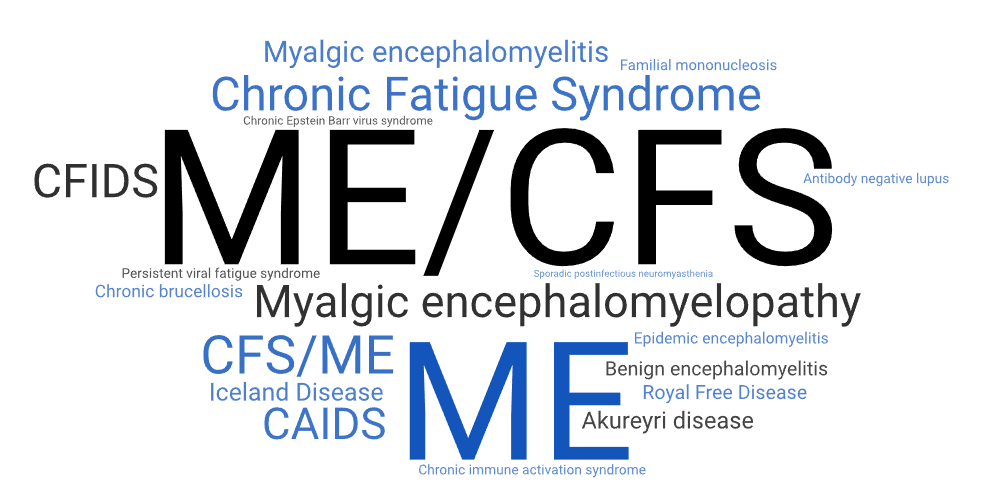Is it ME, or CFS, or ME/CFS? Unfortunately, there can be confusion over what to call the disease because so many names have been used over the years.
In common with many healthcare systems, healthcare professionals and researchers, as well as other charities, ME Research UK uses the term ME/CFS. This is because it causes less confusion when reporting on research – it is the term used by the UK’s National Health Service (NHS) boards and the National Institute for Health and Care Excellence (NICE), and so using ME/CFS accords with the diagnosis given to those affected.
Nomenclature is important as accurate and consistent naming can reflect prevailing attitudes to a disease, and this is especially true for a condition that struggles with recognition and validation.
However, differences in the name do not change the lived experiences of those affected by the disease.
What does the name mean?
ME stands for Myalgic Encephalomyelitis, while CFS stands for Chronic Fatigue Syndrome.
Myalgic Encephalomyelitis can be broken down as follows:
- My refers to muscle
- algic to pain
- Encephalo to the brain
- myel to the spinal cord
- itis to inflammation
So: muscle pain and inflammation of the brain and spinal cord.
The disease is also sometimes called Myalgic Encephalomyelopathy. Here, “pathy” refers to the study of an illness. This is because there is currently insufficient research evidence to prove active inflammation.
The disease of a thousand names
Some terms used over the years to refer to what we now call ME/CFS include Iceland Disease and Royal Free Disease, and are tied to early geographical outbreaks, while others, such as chronic immune dysfunction syndrome, describe the symptoms or reflect what scientists believe explains the disease. Still others, such as the Institute of Medicine’s 2015 suggestion of Systemic Exertion Intolerance Disease (SEID), have never been adopted.
After the Incline Village outbreak in Nevada in 1984, the disease was sometimes (erroneously) called Chronic Fatigue Syndrome or CFS. CFS became the term used by some healthcare providers who were sceptical about the serious physiological nature of the disease, and this is why the use of CFS remains controversial today.
In general use, the most widely recognised terms are ME/CFS, myalgic encephalomyelitis (ME) and, separately, chronic fatigue syndrome (CFS). ME and CFS are recorded separately by the World Health Organisation, with both being classified as diseases of the nervous system. Each has a separate history and differences in their main symptoms and origin.
In the media, the term “Myalgic Encephalomyelitis formerly known as Chronic Fatigue Syndrome” is being used more often as the physical nature of the disease becomes more and more accepted.
Naming in research
Naming is also inconsistent in research criteria. This is partly because, as researchers study the disease and understanding improves, elements within the criteria also change.
The Canadian Consensus Criteria (CCC) and the Revised CCC use the term Myalgic Encephalomyelitis/Chronic Fatigue Syndrome.
The US Centers for Disease Control and Prevention (CDC) and the National Institutes for Health (NIH) both refer to the disease as ME/CFS, even when citing the Institute of Medicine’s 2015 criteria which called for a change of name to Systemic Exertion Intolerance Disease.
The International Consensus Criteria call the disease Myalgic Encephalomyelitis, while the Fukuda criteria refer to Chronic Fatigue Syndrome.
It is to be hoped that once an accurate and widely accepted biomarker of the illness is found, that certainty will at last be reflected in the name.



